The 2026 Nissan Sentra brings more than just a facelift—it redefines what a compact sedan can be by combining sharper design, upgraded tech, and improved comfort, all without straying far from the value roots that made Sentra popular. For U.S. drivers seeking style, practicality, and modern features without paying luxury prices, the 2026 Nissan Sentra is setting high expectations.
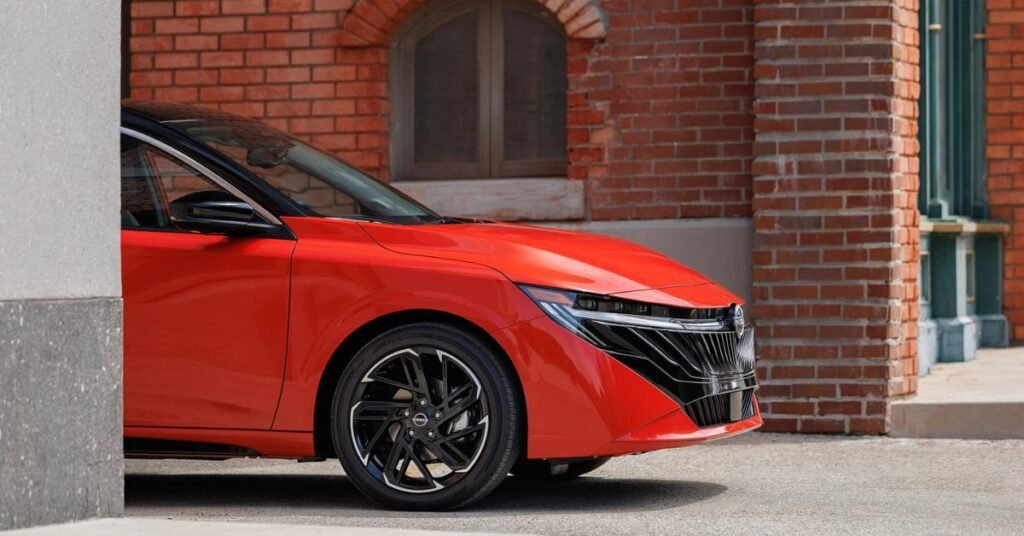
RELATED 2026 Toyota Corolla Cross Hybrid – Smart SUV Expert Review
What’s New in the 2026 Nissan Sentra
If you’re considering the 2026 Nissan Sentra, here are the updates that matter:
- The exterior is completely refreshed. A fastback-style silhouette, a sleeker V-Motion grille, slim LED headlights, and a full-width taillight panel give Sentra a more premium look. The dimensions are nearly unchanged, but the visual stance feels lower and wider.
- Nissan increased body rigidity by about 6%. New suspension tuning, retuned shock absorbers, and a larger steering damper aim to reduce body vibrations and improve ride smoothness.
- Tech upgrades are meaningful. The Sentra now gets a 12.3-inch center touchscreen standard, across all trims. Higher trims also include a 12.3-inch digital instrument cluster. Lower trims stick with smaller driver displays. Wireless Apple CarPlay/Android Auto are standard starting from mid trims (SV, SR, SL). The base S trim still uses wired connectivity.
- Nissan added a new “Sport mode” for SV, SR, and SL trims, which sharpens throttle response and tweaks the CVT’s behavior to feel a bit more responsive under acceleration.
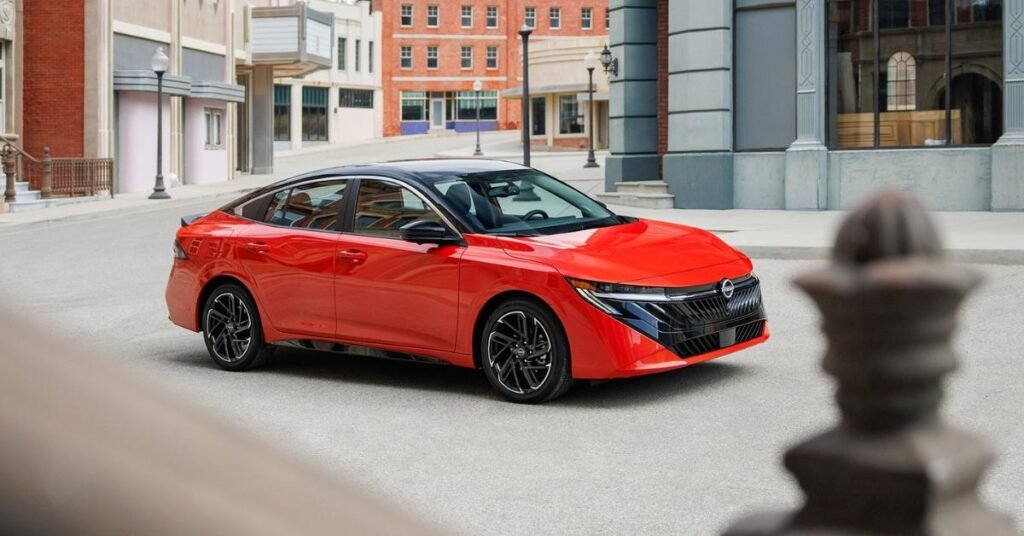
Try Our Free EV vs Gas Calculator
Performance, Engine & Fuel Economy in the 2026 Nissan Sentra
When it comes to what’s under the hood, the 2026 Nissan Sentra keeps things simple and reliable.
Engine, Transmission & Power
- The engine remains the same 2.0-liter naturally aspirated four-cylinder that delivers about 149 horsepower and 146 pound-feet of torque. It’s not a performance beast, but it gets the job done for daily driving.
- All trims use a CVT (continuously variable transmission) that has been retuned for smoother operation. With Sport mode, some trims feel more responsive during overtakes or highway merges.
- Front-wheel drive remains standard. There’s no hybrid or AWD option for the 2026 Sentra, so if you live in an area with snow or need more traction, that’s a factor to consider.
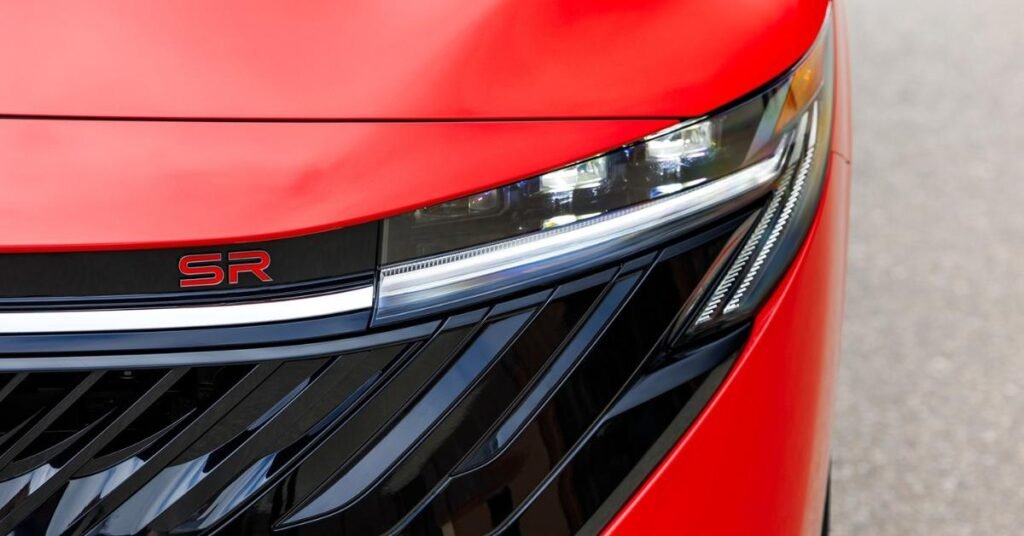
RELATED 2026 Nissan Leaf – Trusted Insight for EV Buyers
Fuel Economy & Real-World Efficiency
- Estimated EPA figures are about 29 mpg in the city, 38 mpg on highway, and 33 mpg combined for the base / SV trims. Higher trims with larger wheels may see slightly lower numbers.
- Real-world driving will reduce those numbers under heavy traffic, AC use, or strong acceleration, but the improvements in aerodynamics, quieter cabin, and refined drive should make them feel more efficient in everyday use.
- Nissan also added standard features like engine stop-start and improved insulation, which help in urban stop/start settings and reduce noise.
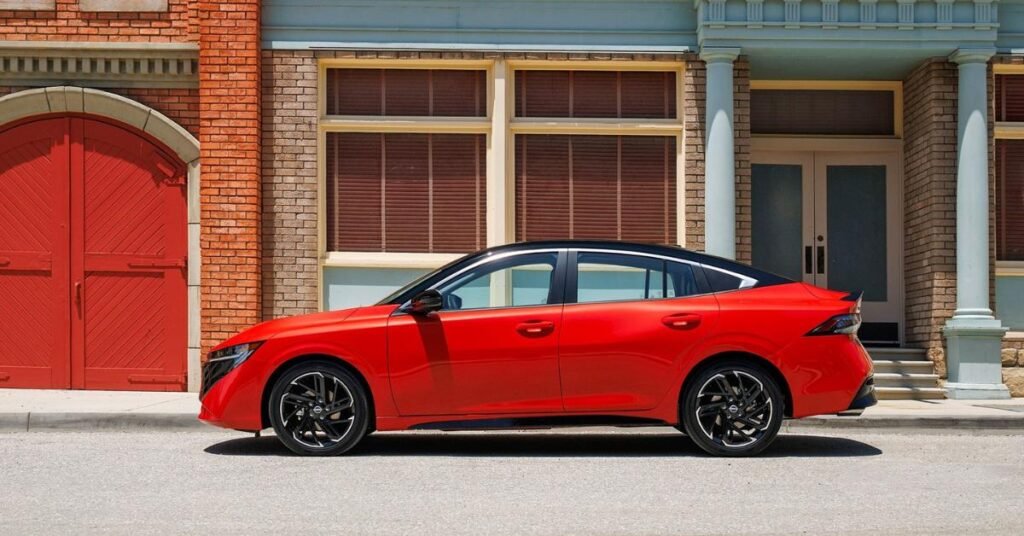
RELATED 2026 Toyota Sienna Hybrid – Ultimate Comfort & Efficiency Tested
Interior, Comfort & Technology in the 2026 Nissan Sentra
If interior comfort and tech are top priorities, the 2026 Nissan Sentra delivers upgrades that elevate it well above its price class.
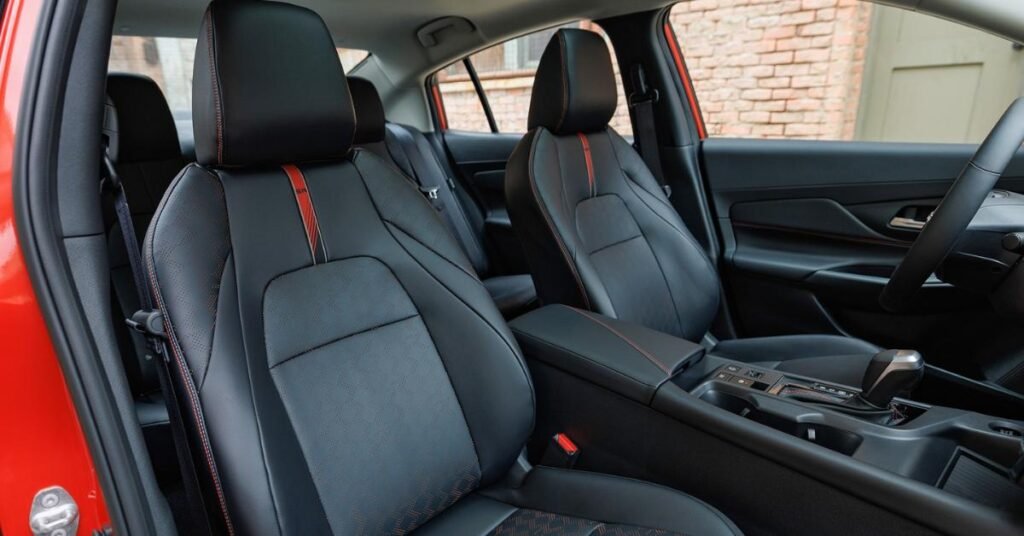
Cabin Layout & Materials
- The Sentra’s cabin is notably upgraded: new displays, cleaner dashboards, more refined materials up front, better insulation, and a quieter ride due to improved noise and vibration tuning.
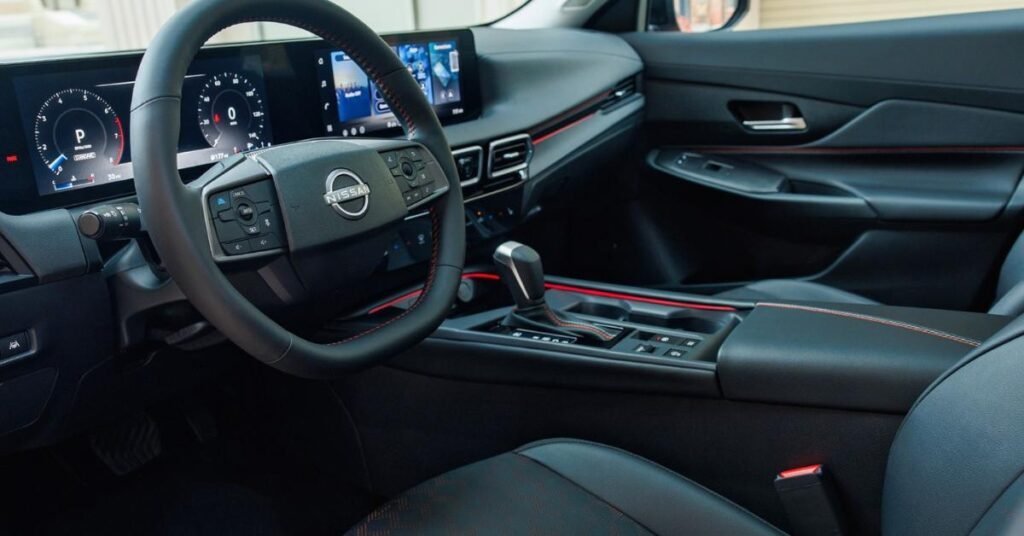
- Interior space remains competitive. Though the wheelbase is slightly shorter in some reports, the overall cabin feels roomy for front passengers. Rear seat space is adequate; for taller adults, it’s fine for daily drives but not luxury back-seat legroom. The trunk is more usable thanks to a lower liftover height.
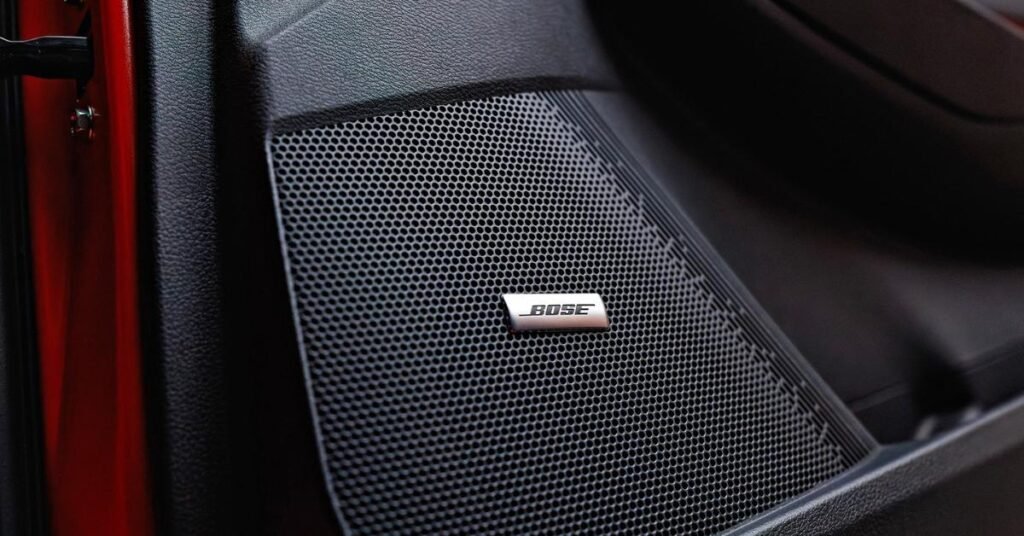
Tech & Driver Features
- Dual 12.3-inch screens (infotainment + digital cluster) are available in all but the base trim; base models get a smaller driver display. Wireless CarPlay and Android Auto are offered starting at the SV level.
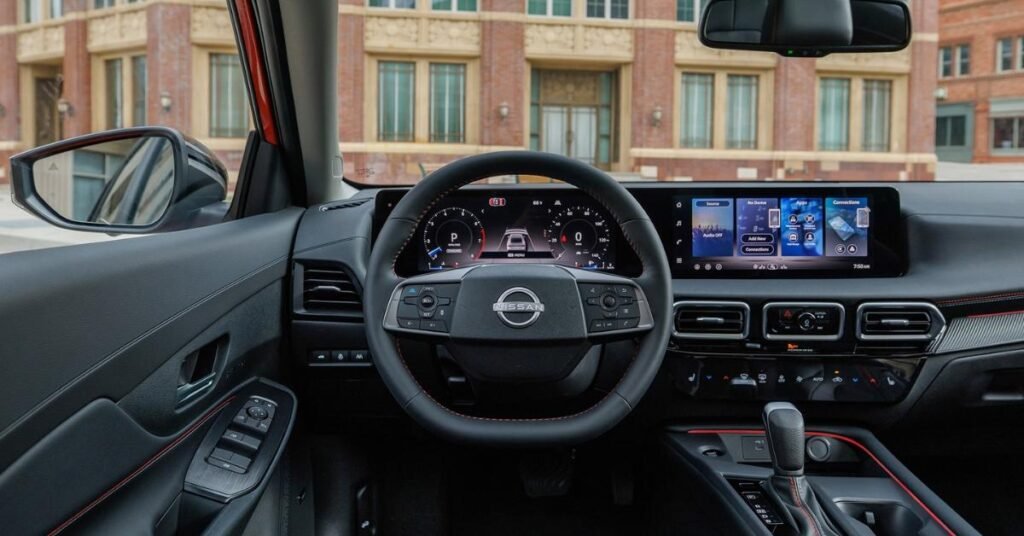
- Standard driver-assist and safety features include Nissan’s Safety Shield 360 suite, blind-spot monitoring, lane departure warning, forward-collision warning, automatic emergency braking, high-beam assist, and a 10-airbag layout. Some trims also add ProPilot Assist for semi-autonomous driving support.
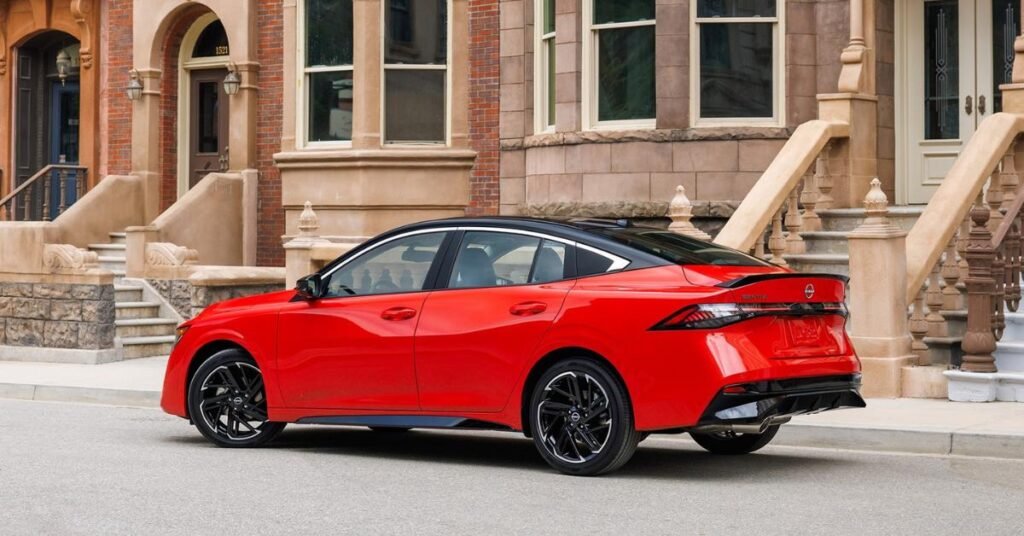
- Other comfort features: optional wireless charging, ambient lighting with color options, upgraded sound system, better HVAC controls with touch-sensitive panels in some trims, and improved trunk accessibility.
Driving Experience & Ride Quality in the 2026 Nissan Sentra
Ride, Handling & Noise
- Thanks to the 6% stiffer structure, revised shock absorber valving, and larger steering damper, the 2026 Nissan Sentra feels more composed over rough pavement and less rattly in highway driving. Road chatter is reduced.
- The steering is light at low speeds for city driving, and predictable at highway speeds. There’s less body roll than the older Sentra, but don’t expect sporty dynamics. It’s tuned more for comfort than performance.
- Noise suppression is improved: smaller grille openings, smoother bodywork, and better insulation help lower wind and road noise. For many buyers, that improvement alone makes a difference in perceived quality.
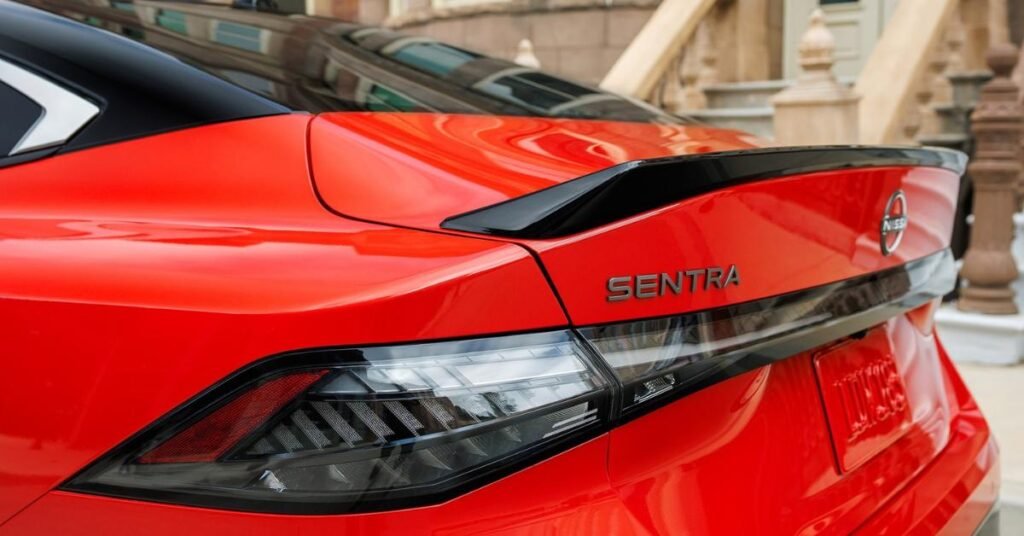
Practicality & Daily Use
- Trunk has one of the lower liftover heights in the segment, making loading groceries, luggage, and everyday items easier.
- Fuel costs, insurance, and maintenance remain favorable thanks to simple engine design, shared parts, and Nissan’s track record.
- Visibility forward is good. Backup/parking camera and available surround-view or around-view monitors improve maneuverability in parking lots.
Pros & Cons of the 2026 Nissan Sentra
Pros
- Sharp new styling and modern design cues make it more appealing than many entry-level sedans.
- Standard tech is generous—large screens, safety equipment, and driver assistance in trims that used to lack these features.
- Strong value proposition: decent fuel economy, solid ride, and manageable ownership costs.
- Improved ride comfort and a quieter cabin make longer drives more pleasant.
Cons
- Engine output (149 hp) is still modest, especially compared to turbocharged rivals. Acceleration is adequate, not thrilling.
- No hybrid or AWD option means limited appeal in snow or for buyers seeking higher efficiency.
- Rear seat space is “okay”—not class-leading. Taller passengers in the back may feel cramped.
- Premium interior touches and luxury features are reserved for higher trims, increasing the price significantly as you go up.
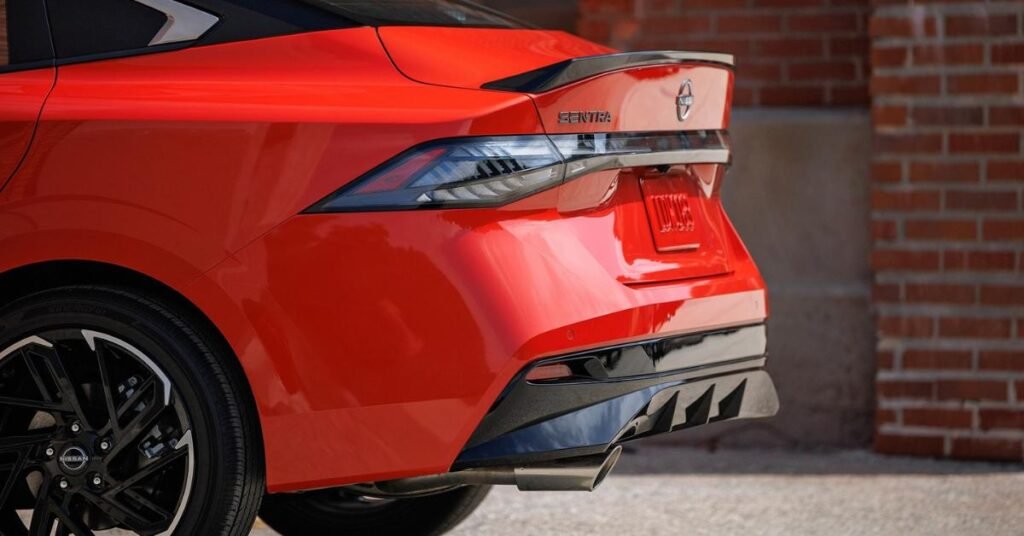
Who Should Buy the 2026 Nissan Sentra
If you are:
- Looking for a reliable, affordable compact sedan with up-to-date tech and style.
- A daily commuter or city driver who values fuel economy and comfort more than raw speed.
- Someone who appreciates modern safety features, large screens, and enhanced design without stepping into an expensive price bracket.
- On a budget but wants a car that feels newer and more polished than older generation Sentras or comparable models.
Maybe less ideal if:
- You need AWD for cold/snowy conditions, or want hybrid/EV options.
- You regularly carry taller passengers in the back for long trips.
- You prioritize performance or sporty handling over comfort and efficiency.
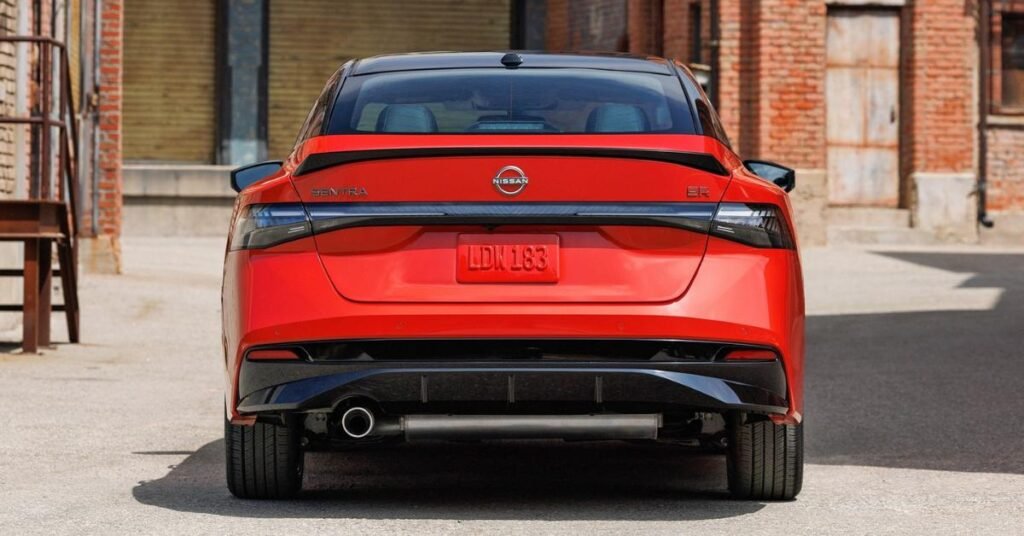
Final Verdict on the 2026 Nissan Sentra
The 2026 Nissan Sentra gives U.S. buyers a much stronger case than ever before to consider a compact sedan. With its bold design upgrades, better comfort, more tech, and a chassis tuned for a smoother ride, it feels less like a budget compromise and more like a smart choice. Yes, it still carries over the same engine and transmission, and it won’t win drag races—but for everyday driving, commuting, and modern lifestyles, it gets the job done well.
If you’re shopping in this segment, the SV or SR trim offers the best mix of value and features. The base S is still solid for basic needs, but the upgrades in mid trims are worth considering. In a market where many compact sedans are trying to justify their existence, the 2026 Sentra stands out by offering style, practicality, and modern features—while keeping costs grounded.
